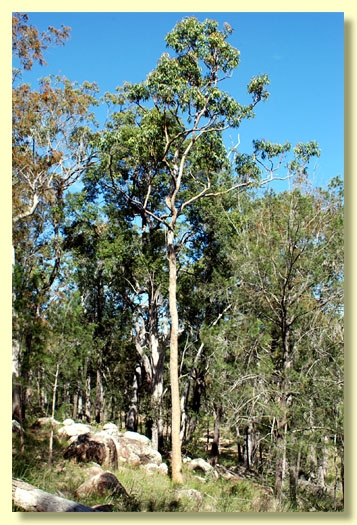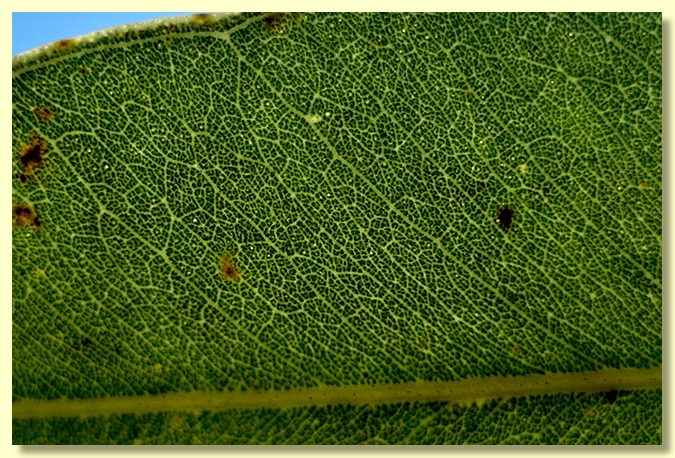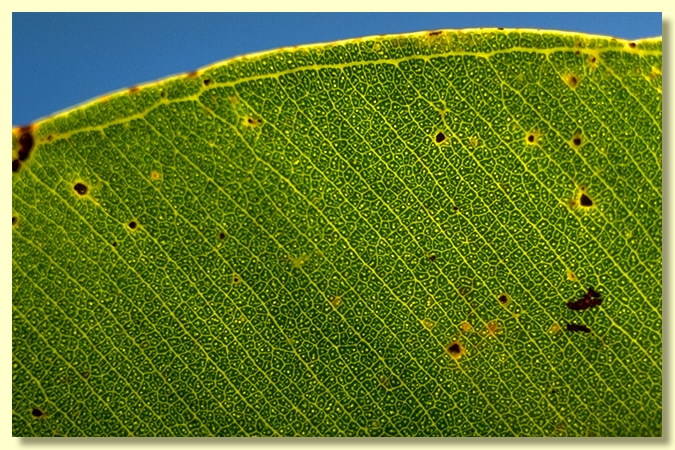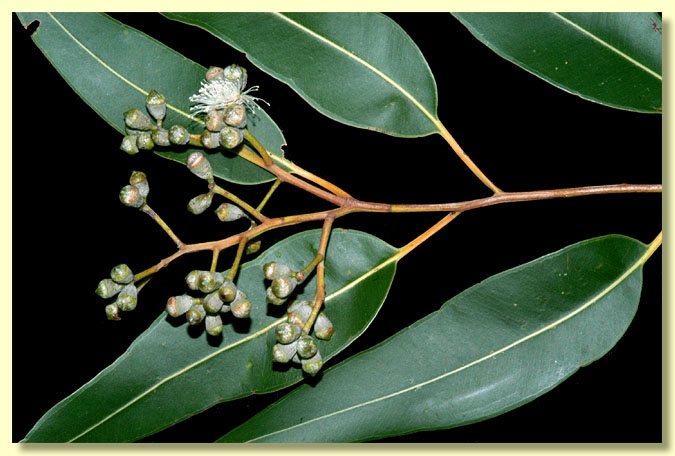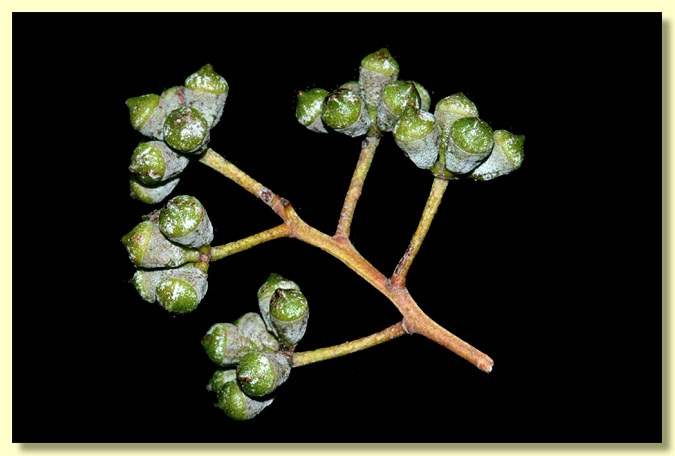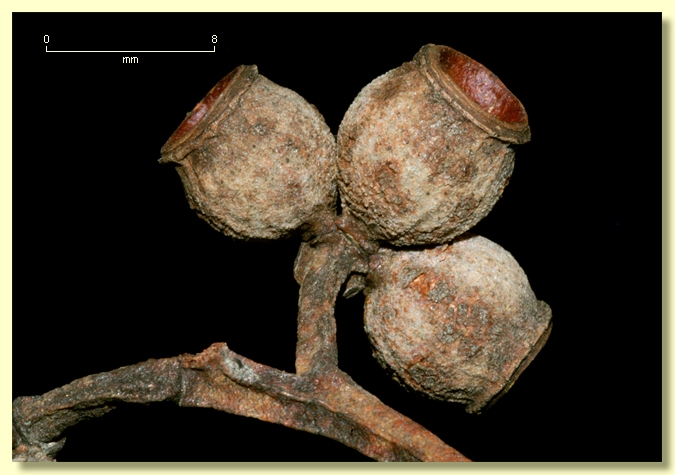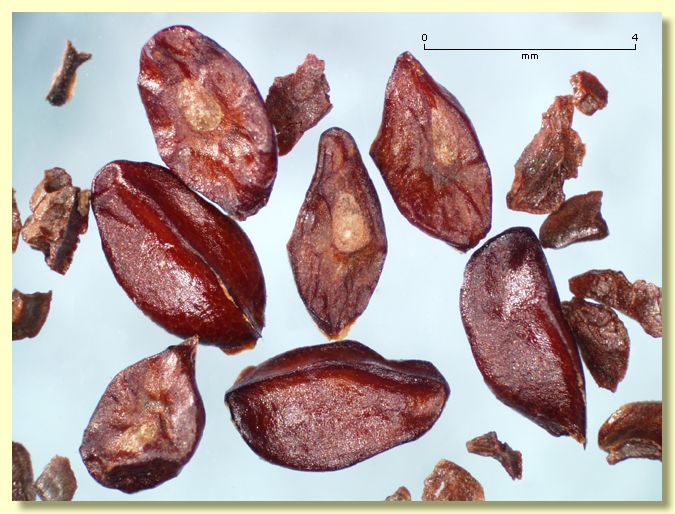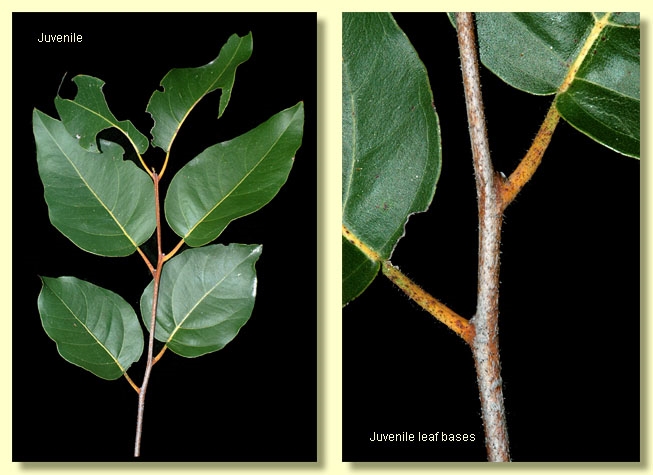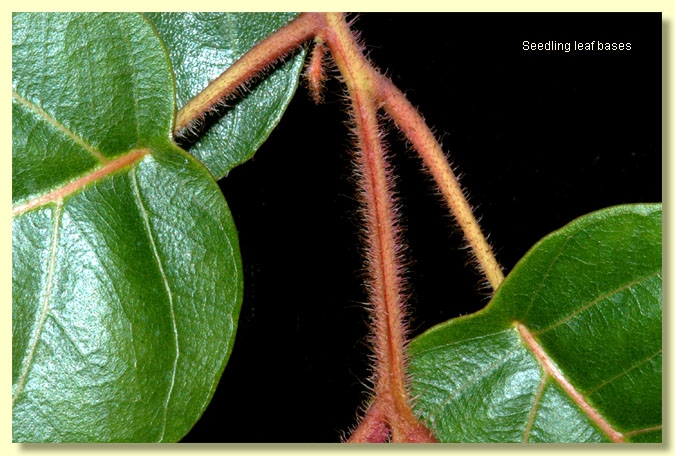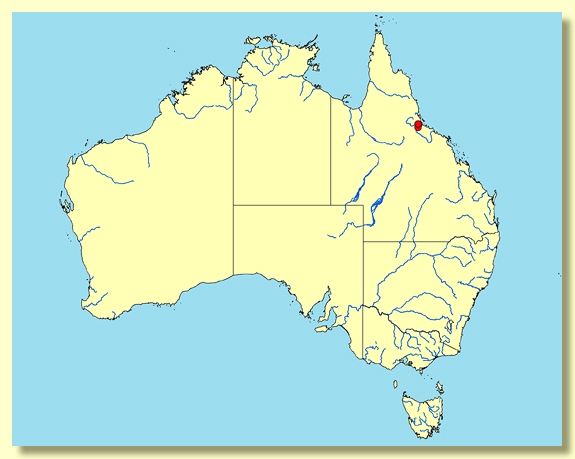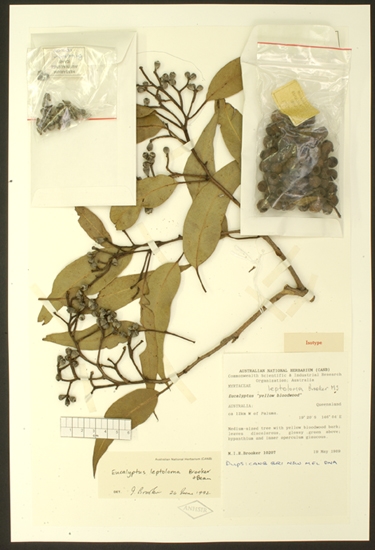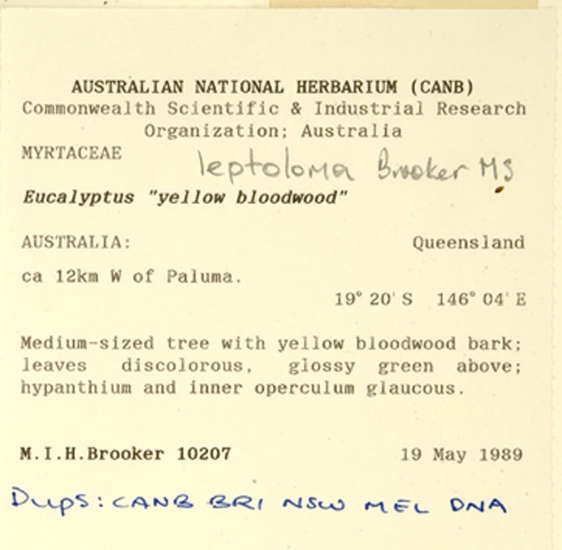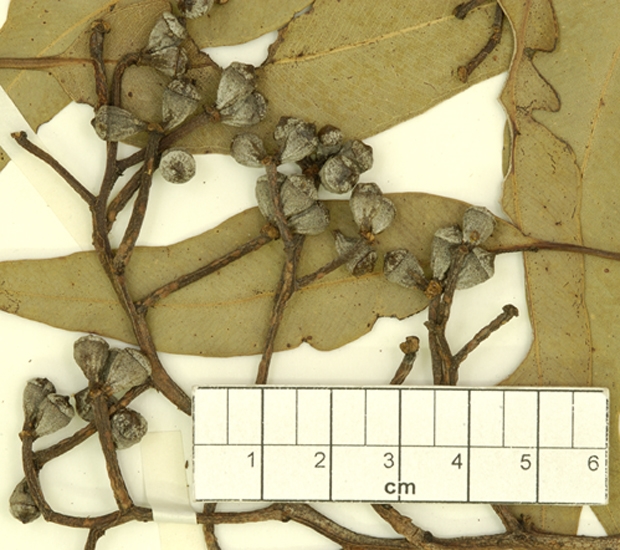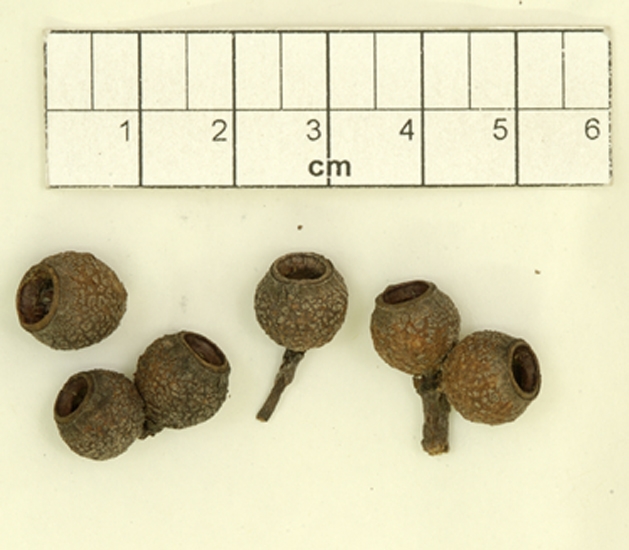Euclid - Online edition
Corymbia leptoloma
Corymbia | Ochraria
Corymbia leptoloma (Brooker & A.R.Bean) K.D.Hill & L.A.S.Johnson, Telopea 6: 369 (1995).
Tree to 15 m tall. Forming a lignotuber.
Bark rough to the smallest branches, thick, tessellated to finely flaky, grey-brown to yellow.
Branchlets smooth (glabrous); have ± elongated oil bodies in the pith
Juvenile growth (coppice or field seedlings to 50 cm): stem rounded to square in cross-section, smooth (rarely setose); juvenile leaves opposite for only 4 or 5 nodes then alternate, always petiolate, cordate to broadly ovate-lanceolate, rarely deltoid, (5.5)8.5–20 cm long, 5–10 cm wide, base lobed to peltate becoming truncate to rounded at higher nodes, apex pointed, discolorous, green, glossy, not scabrid or if so the setae only on midrib and petiole.
Crown entirely of glabrous Adult leaves; leaves alternate (occasional pairs sub-opposite), petiole 1.4–3.6 cm long; lanceolate or falcate, 8.9–21.5 cm long, 2.1–5 cm wide, flat, base tapering to petiole, apex finely pointed, margin entire, strongly discolorous, glossy, dark green above, paler below, penniveined, densely to very densely reticulate, intramarginal vein parallel to and just within margin, oil glands island, small, numerous, often more than 1 per areole.
Inflorescence terminal compound, peduncles 0.6–2.6 cm long, buds 7 per umbel, sessile or shortly pedicellate (pedicels to 0.3 cm long). Mature buds obovoid, 0.6–0.8 cm long, 0.5–0.6 cm wide, white on surface due to rubbery cuticle (not wax), scar present (outer operculum shed early), operculum flattened to rounded and umbonate, or conical, stamens inflexed, anthers ± oblong, versatile, dorsifixed, dehiscing by longitudinal slits (non-confluent), style long, stigma tapered, locules 3, the ovules arranged in 5 ± vertical rows on the placentae. Flower colour unknown.
Fruit sessile or very shortly pedicellate (pedicels 0–0.3 cm long), barrel-shaped to urceolate or truncate-globose, 0.8–1.1 cm long, 0.8–1.1 cm wide, disc descending, valves 3, enclosed.
Seeds brown to reddish brown and shiny, 3–6 mm long, boat-shaped with a keel on the smooth and usually cracked dorsal surface, not winged but some seed have a short flange at one end, hilum ventral.
Cultivated seedlings (measured at ca node 10): cotyledons reniform to orbicular; stems rounded to square in cross-section, setose on lower part becoming smooth above or remaining setose to ca node 10; leaves always petiolate, opposite until ca node 4 to 6 then alternate, ovate to cordate, 10.8–16.5 cm long, 4.5–8 cm wide, lowest leaves have rounded bases and are dull, green and setose on both surfaces until about node 4–6 then bases become peltate, upper surface glossy green and glabrous, whilst paler lower surface remains setose.
Flowering time unknown.
Tall trees endemic to Queensland and of restricted distribution in the Paluma Range north-west of Townsville where it is a component of tall woodland on sandy soils of wetter sites. Corymbia leptoloma is fully rough-barked with flaky loose tessellated yellow-brown-grey bark, a dense crown of large lanceolate glossy green leaves that are paler on the underside, terminal inflorescences and globular to urn-shaped fruit about 0.8–1.1 cm wide.
Corymbia leptoloma is distinguished from all other yellow bloodwoods by its crown of glossy, strongly discolorous, green, glabrous adult leaves and juvenile growth that is also predominantly glabrous (after the first couple of leaves). It generally occurs east of the distribution of C. leichhardtii and occasionally with it (fide Russell Cumming, 2006). The two can be distinguished on adult leaf characters with C. leichhardtii always having concolorous leaves that are dull or at best only slightly glossy from abrasion.
Corymbia leptoloma is listed as "Vulnerable" under the Australian Government Environment Protection and Biodiversity Conservation Act 1999 (EPBC Act). Further information may be found at this web address:
http://www.environment.gov.au/cgi-bin/sprat/public/sprat.pl
MORE ABOUT CORYMBIA
MORE ABOUT YELLOW BLOODWOODS
Eucalyptus leptoloma: Greek lepto, narrow and loma, border, referring to the slightly downturned edge of the adult leaves.

